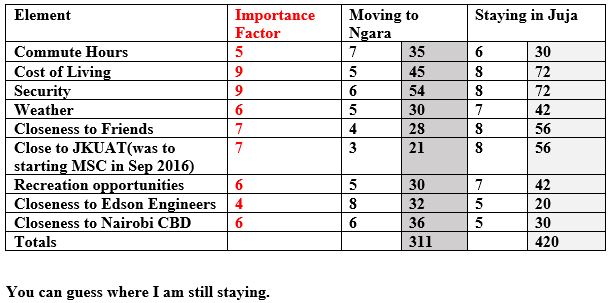It is also called Ben Franklin close or Abraham Lincoln Close (Lincoln was a lawyer and often used this technique in his cases).
This technique is popular with sales people as it is used to list both the benefits of the purchase (the pros) and also the costs (the cons). It is intended for use with prospects who are having a tough time moving forward with a commitment. The pros (the reasons to buy) will win, that is the target. Sales people are taught to write it down like a balance sheet. They then make sure that the ‘pros’ column is longer and more impressive, than the cons. The aim is to make the qualified prospect make a buying decision as quickly as possible in a logical way.
When making big decisions, it may be worthwhile to try out the technique.
Draw two columns on blank sheet of paper, one side for pros and the other cons. try to exhaustively list all the positives and negatives of going ahead with a certain decision. If the Positives are more consider going ahead with the said decision, if the negatives are more, consider relenting on the decision.
Benjamin Franklin described this decision-making process in a letter to Joseph Priestley who had asked Franklin’s advice about a vexing decision. As explained above the process is a matter of listing the Pros and Cons, reflecting on them, and making your decision.If you’d like to read Franklin’s letter to Priestley, click here
The Process/steps
- Frame the Decision.
To decide is to commit to a course of action. Frame your decision as a simple question answerable yes or no regarding some course of action (e.g., “Should I seek new employment?”). - List the Pros and Cons.
Brainstorm or jot down an initial set of pros and cons. don’t rush through the process. Take time to reflect on the decision facing you and add to (or subtract from) the Pros and Cons. - Assess the Importance of the Pros and the Cons.
A simple rating scale of 1 to 10 works well here. Extremely important would rate a 10; moderately important would rate a 5 and not especially important would rate a 1. - Assess the Probability of the Pros and the Cons.
In some cases, a Pro or a Con is certain; it rates a 10. In other cases, a Pro or Con might be viewed as likely but not certain; it rates a 5. And, a Pro or Con might be viewed as possible but remote; it rates a 1. - Weigh the Pros and the Cons.
Multiply the rating for Importance times the rating for Probability. A Pro that is extremely important (10) and is likely to be realized (5) yields a weight of 50. A Con of extremely high importance (10) but a remote possibility (1) yields a weight of 10. - Review and Reflect.
Review the factors you have listed, their ratings, their weightings and take stock of what they tell you about the decision.
Example 1: When I was deciding to move to Ngara/Westlands or continue staying in Juja in November 2015.

Example 2: When I was deciding to pursue MSc. Electrical Engineering at either JKUAT or UoN. in August 2016: I had so far received the two admission letters.

Sample Review & Reflection Questions:
- How do the Pros and Cons stack up against one another?
- How does the importance of the Pros compare with the importance of the Cons?
- How does the probability of the Pros compare with the probability of the Cons?
- What is the “mix” of importance and probability? What patterns do you see?
- What do they tell you?
- What is the overall balance of consequences?
- What are you getting?
- What are you giving up?
- Are the trade-offs worth it?
- What are you risking and are you willing to risk it?
- Are there any inconsistencies to be resolved?
- Which factors really matter?
- Are there any overriding factors?
- Who else, if anyone, should you consult?
- When do you have to decide?

Perfect.